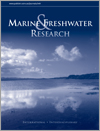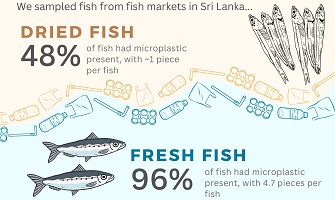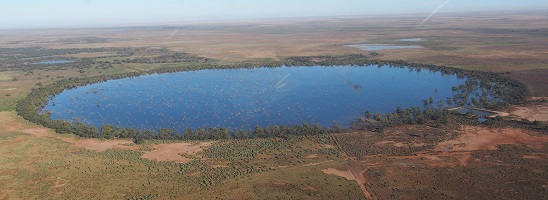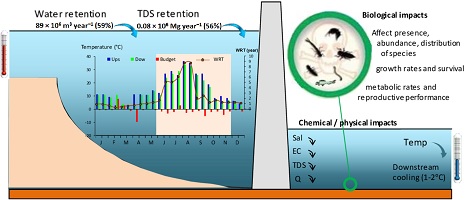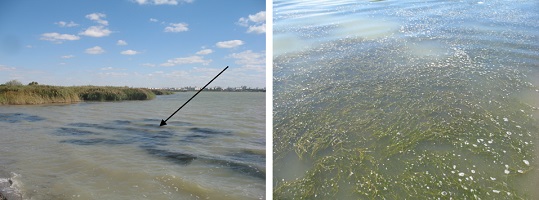Marine and Freshwater Research
Volume 76
Number 2 2025
Investigations into the decomposition of common carp across three experiments of an increasing scale (bucket, mesocosm, wetland) showed a considerable release of phosphorus, with faster decomposition rates in warm conditions. The addition of 2400 kg ha−1 of carp induced anoxia in the wetland, underscoring essential considerations deploying biocontrol agents (e.g. cyprinid herpesvirus, CyHV-3) causing mass carp mortality.
This study explores the impact of community water ecological design on promoting health behaviours among the elderly in China’s aging population. Through a survey of 315 seniors and analysis using structural equation modelling, the findings showed that water ecological design enhances health by improving environmental perception and psychological comfort.
This article belongs to the collection: Global perspectives: sustainable management of freshwater ecosystems.
Microplastics have been found in aquatic ecosystems globally; however, understanding the occurrence of microplastics in seafood products prepared for human consumption has received less attention. We sampled dried and fresh fish from seafood markets in Sri Lanka and found that 82% of fish contained microplastics, with fresh fish containing more than did dried fish. (Image credit: Nina Wootton using Canva.com.)
This study explores the diverse invertebrate communities living between sand grains on Brazilian beaches. We found that grain size and other sediment characteristics, such as sediment heterogeneity, significantly shape the distribution and richness of these organisms. Additionally, different groups show specific habitat preferences based on sediment type, highlighting the importance of sediment in shaping beach ecosystems.
Lakes, creeks and floodplains that are situated away from the main channel are likely to play important roles in the ecology of inland rivers. These isolated areas provide habitat for endangered species as well as nursery areas for resident fauna, and data obtained from such areas should inform research and management projects at catchment scale. (Photograph by Adam Kerezsy.)
This study investigated the identification and distribution of fish larvae in the Cibareno River, which is being modified by construction of a 3.25-m weir. Larval fish diversity is slightly lower in upstream reaches. Alien guppies were abundant. Genetic identification is essential for understanding the diverse species of fish larvae present. Implementing sustainable fisheries management practices requires this information.
The effects of 105 days of starvation on body mass, respiration and haemolymph proteins were measured in two groups of pāua, one group where the haemolymph was sampled at intervals and the other which was sampled only at the start and end of the experiment. Fed individuals increased body mass, whereas starved individuals lost body mass and condition. Paua survive extended periods of starvation by metabolising haemocyanin and are able to survive stressors associated with low food availability.
Downstream waters of the Charef Dam experience thermal cooling, particularly during the dry season, with temperature differences exceeding 2°C. This cooling effect, driven by the dam’s long water-residence time, highlights the importance of managing dam operations to mitigate potential negative impacts on downstream ecosystems. (Image credit: Omar Ramzi Ziouch.)
This study investigated Australian’s knowledge of the Great Barrier Reef, including which threats the reef is facing and which species reside on the reef. We found that Australians listed various environmental and social threats to the reef, and that clown fish were the most commonly listed specific species, perhaps owing to the popularity of film Finding Nemo.
Hypersaline waters are some of the most extreme habitats but have high productivity, and the potential to support bird diversity as well as develop multi-species aquaculture. We provide new information on interactions between seagrass Ruppia and zooplankton in those waters, which gives a better understanding of unique ecosystems and is valuable for the management of hypersaline water bodies and the development of sustainable polyaquaculture in them. (Photographs by N. Shadrin.)
Eastern blue groper (Achoerodus viridis) is an iconic Australian rocky-reef fish, and we analysed its abundances for more than a decade across the New South Wales coastline. Blue groper was most abundant in temperate rather than subtropical waters along this coast. Its abundances were stable on deeper reefs, but declined steadily through time on shallow reefs. This pattern indicates that blue groper is declining because of warming oceans, although deeper reefs may provide a thermal refuge.


